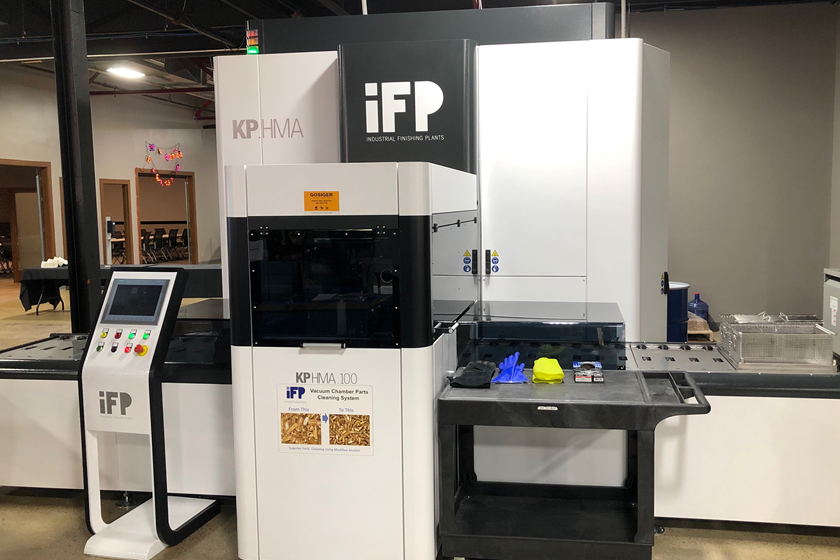Another Variation on the Pitting Theme
Question: We are finishing 6061-T6 cold drawn tubing.
Question:
We are finishing 6061-T6 cold drawn tubing. The general process is to centerless sand the exterior, scotchbrite, and then bright dip, anodize and black dye. Sometimes pitting occurs predominantly on one end of the part. This pitting is only visible after the anodizing process. What are some of the causes of pitting, and do you have some suggestions for eliminating it? J.S.
Answer:
Pitting seems to be a major concern of anodizers, and I get a lot of questions about it. The sources of pitting can be difficult to find and eliminate. It requires a step-by-step approach of careful inspection of the work after each process tank, including every rinse tank. Once it is determined where the pitting actually occurs, then you can figure out what to do to get rid of it.
Featured Content
You say that the pitting is only visible after anodizing. It is unlikely that pitting is occurring in the anodize tank itself, but have your anodize bath analyzed for chlorides just in case. A concentration of chlorides above 50 ppm could be a cause of the pitting. Unfortunately, pitting is almost always easier to see after anodizing because, if the pits are electrolytic in nature, they won't be anodized. Chlorides will build up in the bath if city water is being used in the rinse immediately before and/or if city water is being used to make up the anodize bath itself. Always use deionized water to make up your anodize tank.
The two most likely places for electrolytic pitting to occur are in any rinse tank, particularly highly contaminated ones, and in the black dye tank. In either place, pitting can be the result of either so-called stray electrical currents or sometimes by a difference in electrical potential between the parts being anodized and the surrounding fixtures, racks, tank, etc. If the tanks are steel or stainless steel, make sure they are properly grounded. Isolate the hoist electrically from the work so that possible stray electrical currents from the hoist or from the building to which it is attached cannot reach the work. Also, be sure to electrically isolate the work from each tank.
Although you don't indicate that the pitting is occurring in the dye tank, the same principles apply. It may be more difficult to eliminate the electrical potential differences in the black dye than in other tanks. If you do all of the above and still get pitting in the dye tank, you might try hanging a magnesium bar on the rack with the parts as they are dyed. Usually, if pitting wants to occur, it will go to the magnesium because it is more "active" on the periodic chart than aluminum. Consider this a last ditch effort to salvage the process until a new dye bath could be made up, because the bath is probably too contaminated to work properly. Be sure to use good quality deionized water for bath make up. Water quality greater than or equal to 200k ohms (5 micro Seimens) is a good standard for the anodizing line.
If titanium racks are being used, it is also possible that the ratio of titanium to aluminum surface area in the dye, or in any of the other tanks, is too high. Try to cut down on the titanium exposed to the process by using more aluminum for your racks, masking as much of the titanium as possible, etc. Where titanium surface area of the load is greater than the aluminum surface area, the aluminum now can become the sacrificial anode in the bath, just as the magnesium in the previous example. Please let me know how you do.



















